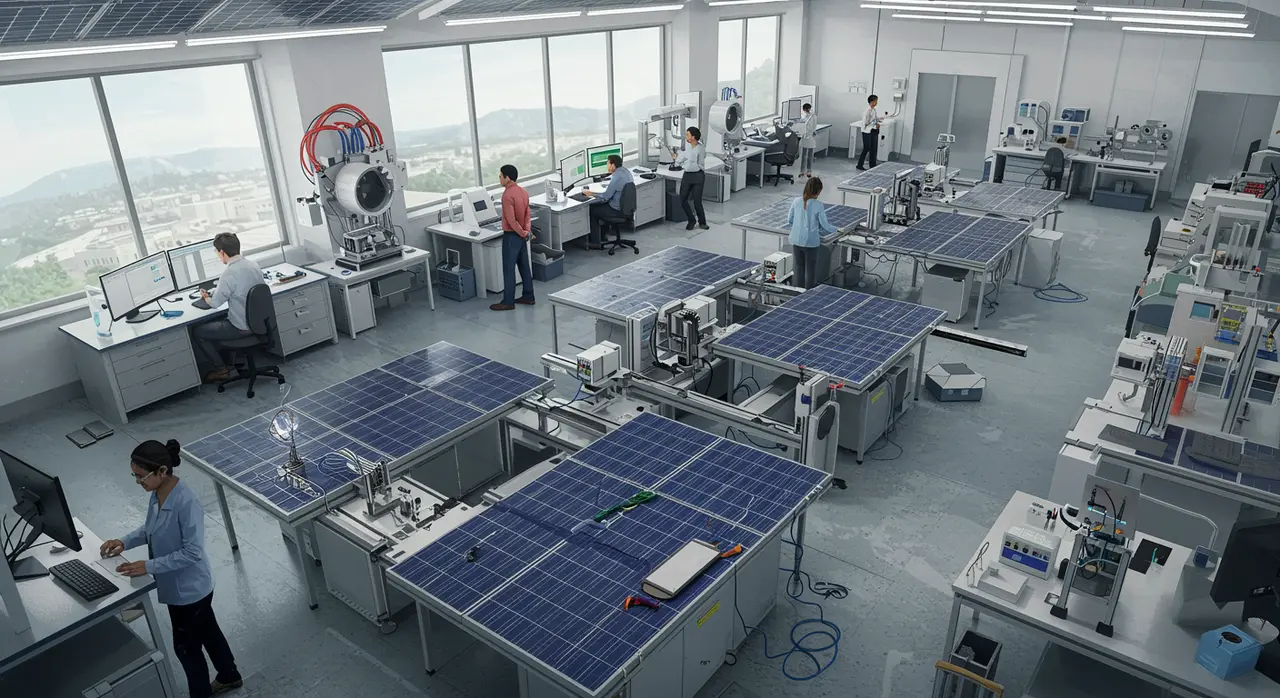University of Sheffield Finds Breakthrough to Extend Perovskite Solar Cell Lifespan Tenfold
50 views
Researchers from the University of Sheffield and the National Physical Laboratory have unveiled a groundbreaking discovery that could redefine the future of solar energy. By introducing alumina nanoparticles into perovskite solar cells, they have managed to suppress the degradation chain reactions that have long plagued these promising but fragile devices. This innovation could extend the lifespan of perovskite cells by as much as tenfold, bringing them closer to competing with the durability of silicon solar panels, which currently dominate the market with lifespans exceeding 25 years. The development marks a significant step toward making solar power more affordable, efficient, and accessible on a global scale.
A New Dawn for Perovskite Solar Technology
Perovskite solar cells have long tantalized researchers and industry leaders alike with their potential to revolutionize renewable energy. Their low production costs and impressive efficiency make them a compelling alternative to traditional silicon-based solar panels. However, their Achilles' heel has always been their vulnerability to environmental factors such as humidity, temperature fluctuations, and prolonged exposure to light. These elements trigger degradation processes that severely limit the cells' operational lifespan, rendering them impractical for widespread commercial use.

The introduction of alumina nanoparticles into the equation appears to be a game-changer. By acting as stabilizing agents, these nanoparticles interrupt the cascade of chemical reactions that lead to the breakdown of perovskite materials. The result is a dramatic extension of the cells' durability—potentially up to ten times longer than their current lifespan. This advancement not only addresses one of the most critical barriers to the adoption of perovskite technology but also opens the door to a new era of solar innovation.
The implications of this breakthrough are profound. Silicon solar panels, while reliable and long-lasting, are costly to manufacture and require significant energy inputs during production. Perovskite cells, on the other hand, can be produced using simpler methods and less expensive materials, offering a more sustainable alternative. If their stability can be enhanced to rival that of silicon panels, the cost savings could be substantial, making solar energy more accessible to communities and industries around the world.
Bridging the Gap Between Promise and Reality
The discovery of alumina nanoparticles as a stabilizing agent for perovskite solar cells is not merely a technical achievement—it represents a bridge between the theoretical promise of this technology and its practical application. For years, the allure of perovskite cells has been offset by their limitations, leaving researchers grappling with how to translate laboratory success into real-world viability. This latest development suggests that a solution may finally be within reach.
Yet, challenges remain. Scaling up the production of perovskite solar cells while incorporating alumina nanoparticles will require careful optimization to ensure that the process is both cost-effective and environmentally sustainable. Moreover, rigorous testing will be essential to confirm the long-term performance of these enhanced cells under diverse conditions. If these hurdles can be overcome, the impact on the renewable energy sector could be transformative.
The timing of this breakthrough is particularly significant as the global demand for clean energy continues to surge. Governments and industries are under increasing pressure to transition away from fossil fuels and invest in sustainable alternatives. The ability to produce affordable, efficient, and durable solar panels could accelerate this shift, helping to meet ambitious climate goals while reducing the economic barriers to adoption.
In reflecting on this milestone, one cannot help but consider the broader implications for scientific innovation and its role in addressing global challenges. The collaboration between the University of Sheffield and the National Physical Laboratory exemplifies the power of interdisciplinary research and the importance of investing in cutting-edge technologies. As the world grapples with the urgent need for sustainable energy solutions, breakthroughs like this serve as a reminder of what is possible when ingenuity and determination converge.
In the end, the promise of alumina-stabilized perovskite solar cells is not just about improving the efficiency and lifespan of a single technology—it is about reimagining the way we harness the sun’s energy to power our lives. If the potential of this discovery can be fully realized, it may well mark the beginning of a new chapter in the story of renewable energy, one in which the barriers to progress are not merely overcome but dismantled entirely.